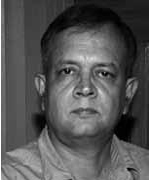Obama’s Operation
 Radhavinod Raju
Radhavinod Raju
The Osama-US saga dates back much before 9/11. A graphic description of all the efforts made by various agencies involved in the security and defence of the United States to nab or eliminate bin Laden from the late Nineties has been carefully documented in the excellent book, Ghost Wars written by Steve Coll. The book won the Pulitzer Prize in 2005. It is common knowledge that the United States was aware of the imminent threat posed by al Qaeda to it, even way back in 2001. In retrospect, questions do arise on the lack of coordination between the FBI and the CIA, hyped as the foremost intelligence cadres in the world, which led to the devastating catastrophe of 9/11, an incident which could easily have been avoided.This has been clearly highlighted in another award winning book, The Looming Tower by Lawrence Wright. While a lot of credit goes to the CIA and other agencies which successfully carried out the Abbottabad operation, and even more to President Barrack Obama for giving the decisive ‘go ahead’ signal to carry it out, the Americans will have to do a lot of soul searching and ask themselves whether the failure to carry out similar action in 2000 following the al Qaeda’s attack on the USS Cole, or the problem in intelligence sharing between the CIA and the FBI as late as September 2001, when the twin towers were brought down by Qaeda terrorists.
During his days in Sudan after he was banished from Saudi Arabia, bin Laden had financed Arab Islamist radicals exiled by Pakistan in early 1993 to join him in Sudan. The Americans found that bin Laden was exhorting, financing and arming terrorists in North Africa, Egypt, Jordan and Saudi Arabia from Sudan. Osama had also tried to assassinate the CIA station chief in Sudan when he found out that the CIA was prying into his affairs. Ramzi Yousef, the Pakistani mastermind of the World Trade Centre bombing of February, 1993, stayed in a Pakistani guest house funded by Osama bin Laden after Ramzi escaped from the United States. This information was passed on to the US agencies by their Pakistani counterparts who had arrested Ramzi and handed him over to the US to stand trial there. It was in such circumstances that the United States government brought pressure on the Sudanese government to send him out of Sudan.
The United States then considered whether there was enough material against Osama to indict him in an American court, failing which they tried sounding the Saudi Arabian, Egyptian and Jordanian governments to take Osama to stand trial in one of their courts. But all these efforts proved futile.
Osama then landed in Afghanistan in 1996, when the Taliban were establishing themselves. With his resources, men and expertise in construction, Laden was able to ingratiate himself with Mullah Omar, the supreme commander of the Taliban. The ISI was then working with and closely monitoring the activities of the Taliban, and came to a working relationship with Osama bin Laden to train Kashmiri militants in some of al Qaeda’s training camps in Afghanistan. This would provide deniability to the Pakistan government of involvement in Kashmir. By early 1997, Osama had made Kandahar, the seat of Mullah Mohammad Omar, supreme commander of the Taliban, his home, indicating his growing proximity to the Taliban’s leadership.
Around this time, the Americans got inputs that Osama was looking for weapons of mass destruction, and then, sensing a threat to the US and its citizens, started making ef
Subscribe To Force
Fuel Fearless Journalism with Your Yearly Subscription
SUBSCRIBE NOW
We don’t tell you how to do your job…
But we put the environment in which you do your job in perspective, so that when you step out you do so with the complete picture.








